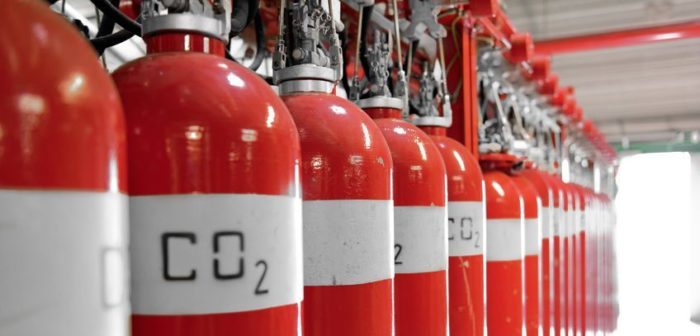In its annual Cargo Claims Review, the Swedish Club informed of a cargo fire caused by moving cargo due to inclement weather conditions. The case highlighted the importance of detailed plans and discussions among Master, Chief officer, technical manager or charterer, when it is about critical cargo operations.
The incident
The RoRo vessel was underway and expected to sail through heavy weather with up to Beaufort scale 10 winds and eight metre high waves. The cargo onboard consisted mainly of vehicles, containers, and jerry cans with fuel on flat racks.
Before loading, the Chief Officer went ashore to inspect the cargo. He inspected the jerry cans that were secured with quick lashings through the handles of each row and secured to bars on the flat racks. He was concerned that the jerry cans were placed on flat racks and not in containers, as there were no walls around the racks to protect the jerry cans. The flat racks and containers were secured with a combination of web lashings and chains.
The vessel departed in the evening and maintained a speed of 18 knots to try to keep distance from the heavy weather. The following morning the Chief Officer and crew inspected the cargo. They found only minor issues with connecting a few slack lashings that needed to be tightened and they added additional lashings to some units that were a little loose, or did not have ideal angles.
Later that morning the wind increased, the vessel started to roll and the Master slowed down. The vessel then sailed through heavy weather for the following 24 hours with up to Beaufort scale 10 winds and waves of at least eight metres high. One of the containers came loose and hit one of the flat racks with jerry cans.
The Master believed it unsafe for the crew to go onto the weather deck and relash the container because of the heavy rolling. The vessel was rolling and pitching so heavily that some of the cargo started to move. A number of jerry cans fell onto the deck and leaked fuel as waves and water washed over the weather deck.
The Master assumed that any fuel spilled on deck would be washed away, but this was not the case. The Master altered course to face the waves and reduced speed even further. This stopped the rolling but not the pitching.
From the cameras on the bridge, sparks could be seen coming from the moving containers on the weather deck. To prevent a fire from starting, the electricity was turned off for the reefer units on the weather deck and the sprinkler system was started. The Master hoped that this would wash away all the fuel on deck but unfortunately this was not the case.
Huge flames could then be seen on the weather deck through the vessel’s cameras. The Master activated the fire alarm and broadcast a mayday over the VHF. Everyone was assembled and accounted for. The burning cargo was in the forward part of the weather deck. The fire team, led by the Chief Officer, approached the fire from the side walkways and from the stern on the weather deck. The sprinklers were also working. There were now flames around 30 metres high. Several explosions occurred to the fuel containers and jerry cans. The crew fought the fire for five hours until they had it under control.
Lessons learned
- If you find yourself questioning any situation then always get a second opinion. “If you think you should call the Master, call the Master” is an approach which can be applied to situations across the board. The Chief Officer was unsure about the jerry cans and the open trailer and he was also aware of the incoming heavy weather. If these issues had been discussed in more detail with the Master, technical manager or charterer, the decision may have been made that a closed container should be used. Onboard a vessel, consequences can be very severe. That is why critical operations like this need to be discussed in detail and a proper risk assessment completed which identifies the possible risks and consequences.
- The fire was most likely caused by sparks from the moving container, which ignited the fuel that had leaked onto the weather deck from some of the jerry cans that were damaged. It should be evaluated why the containers were not secured properly. Either the cargo securing manual has to be updated or there needs to be an investigation as to why the manual was not complied with































































